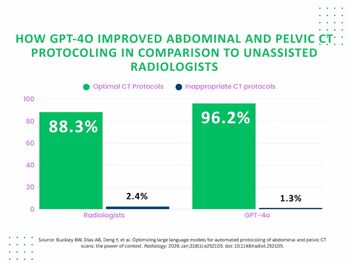
Weak nuclear medicine market prompts ADAC stock slide
Drop in orders may signal prolonged slumpSales of nuclear medicine equipment remained level through muchof 1993, while orders in other modalities plunged due to apprehensionabout health-care reform. Nuclear medicine's easy ride could becoming
Drop in orders may signal prolonged slump
Sales of nuclear medicine equipment remained level through muchof 1993, while orders in other modalities plunged due to apprehensionabout health-care reform. Nuclear medicine's easy ride could becoming to an end, however. Last month one of the modality's highfliers, ADAC Laboratories, reported that customers are delayingnuclear medicine equipment purchases, causing a sharp drop inorders.
ADAC stock slipped 15% in one day after the Milpitas, CA, companyannounced that it expects U.S. and European bookings to be down10% to 20% for its second fiscal quarter (end-April 2) comparedto the previous quarter. The announcement caused ADAC stock todrop $1.75 to $9.50 per share in heavy trading on March 23. ADACshares closed at $8.25 on March 30.
The slowdown in bookings was caused by customers delaying gammacamera purchases, according to Stanley D. Czerwinski, ADAC chairmanand co-CEO. The slump would not cause a decline in ADAC's revenuefor the quarter because of the company's large backlog of orders.The drop could affect the company's revenues in the future, however.
ADAC's announcement is the latest harbinger of a prolongedslowdown in gamma camera sales. The nuclear medicine market suffereda 26% decline in revenues in the last quarter of 1993 (SCAN 3/16/94),according to ADAC competitor Sopha Medical Systems.
ADAC experienced an increase in the number of postponed ordersin that quarter as well, a phenomenon that appears to have carriedover into 1994, Czerwinski said.
"We are still uncertain whether this represents a trendor is a temporary condition," Czerwinski said. "Thebasic conditions which have sustained the nuclear medicine marketstill exist: the extended age of the existing equipment, the valueof the modality and the cost-effectiveness of our new products.Nonetheless, it would be inappropriate to assume that nuclearmedicine is immune to the circumstances which have affected allother imaging modalities."
In other ADAC news, president and COO David Lowe was promotedto the additional position of co-CEO. Lowe will share CEO responsibilitywith Czerwinski, who will retain his position as chairman.
Newsletter
Stay at the forefront of radiology with the Diagnostic Imaging newsletter, delivering the latest news, clinical insights, and imaging advancements for today’s radiologists.




























